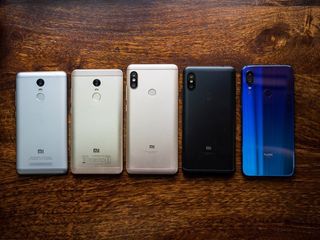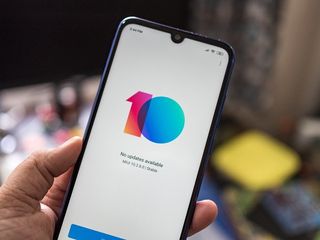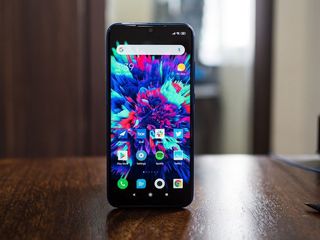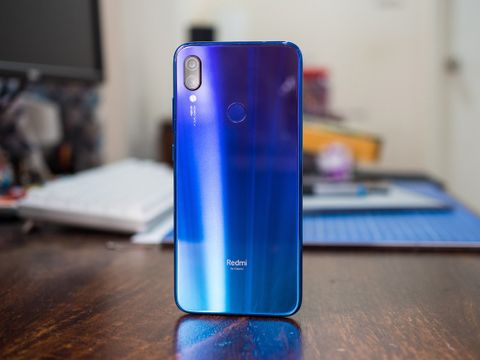Xiaomi made its debut in India nearly five years ago, launching the Mi 3 at a time when local players dominated the segment. Brands like Micromax, Lava, and Karbonn called the shots, and while Samsung was the number one manufacturer, it faced stiff competition in the budget segment.
Fast forward to 2019, and things are very different. There aren't any homegrown brands anymore, Xiaomi is sitting pretty at the top of the summit, and Samsung has drastically overhauled its budget strategy to counter Xiaomi. To say that Xiaomi single-handedly killed off the likes of Micromax and Lava would be unfair — it certainly contributed to their decline, but Indian brands failed to see the looming threat of brands like Xiaomi, OPPO, and Vivo, and were ill-prepared to deal with it once it arrived.
The reason for Xiaomi's success in India boils down to a single factor: value. From the Mi 3 to the Redmi Note 7 Pro, the brand has always been about delivering unmatched value in whatever segment it enters. That's true for its TVs, soundbar, fitness bands, and a myriad of smart home devices.
Several brands have tried to emulate Xiaomi's strategy in the budget segment, but few have come close. While Xiaomi has ventured into a lot of lifestyle categories in recent months, the phone business continues to be its primary revenue driver. The Redmi series in particular accounts for an overwhelming majority of Xiaomi's sales, and 2019 promises to be a momentous year for the brand.
The Redmi Note 7 Pro is the biggest year-on-year update in the lineup so far, and it aims to cement Xiaomi's position at the top of India's smartphone segment.
The Good
- Gorgeous gradient design
- Robust internals
- 48MP camera is great
- Two-day battery life
- USB-C charging
The Bad
- Software quirks
- Only available via flash sales
- MIUI bogged down by ads
Redmi Note 7 Pro Hardware

Over the last three years, Xiaomi has maintained a yearly release cadence for the Redmi Note series. That's why it was puzzling to see the Redmi Note 6 Pro launch back in November, offering the same internal hardware as the Redmi Note 5 Pro with a few minor tweaks.
It's also understandable why Xiaomi decided to update the Redmi Note 6 Pro after just four months. The Snapdragon 636 chipset is a reliable workhorse, but with the likes of the ZenFone Max Pro M2 and Realme 2 Pro sporting a Snapdragon 660, Xiaomi had to act to maintain its edge in the budget category.
With a switch to a glass back, the Redmi Note 7 Pro is one of the best-looking budget phones today.
And that's where the Redmi Note 7 Pro comes in. The phone has a brand new design with a gradient finish at the back that gives it a much more upmarket look. Xiaomi was one of the first to offer metal designs in the budget segment — back when everyone was still using polycarbonate — but with the Redmi Note 5 Pro, that design aesthetic was starting to look stale.
The design needed a much-needed refresh, and the Redmi Note 7 Pro delivers just that. The Aura design sees two layers of Gorilla Glass 5 sandwiched between a plastic rim, with the back featuring a gradient pattern similar to what Huawei and Honor offer. On my Neptune Blue unit, the color shifts between various hues of blue as light bounces off its surface. With the striking gradient patterns and gorgeous color options, the Redmi Note 7 Pro is one of the best-looking budget phones I've used.
Gorilla Glass 5 should provide additional protection against tumbles, but you're better off using a case. Xiaomi has also added a layer of P2i nanocoating to the surface of the Redmi Note 7 Pro, which should allow for some protection against minor spills — just don't take the phone to the pool as there's no IP rating.





Up front, you get a waterdrop cutout on a 6.3-inch display. The phone is marginally taller than the Redmi Note 6 Pro thanks to the slightly larger 6.3-inch display, and while the cutout at the top is narrower, the bottom bezel is still prominent. That said, there's a small LED notification light tucked away at the bottom, so I don't mind the fact that the bezel is chunkier than most phones.
TheIPS LCD display itself is outstanding: you get vibrant colors and great viewing angles. Xiaomi has been offering some of the best displays in the budget segment for some time now, and that thankfully hasn't changed with the Redmi Note 7 Pro.
You won't find a phone that matches the Redmi Note 7 Pro in terms of value.
The internal hardware is where things get really interesting. The Redmi Note 7 Pro is one of the first devices to be powered by the Snapdragon 675, with the chipset optimized for gaming. Qualcomm is using fourth-gen Kryo cores in the 675 — a first in the 6xx series — with the Redmi Note 7 Pro featuring two cores based on the Cortex A76 and six energy-efficient cores based on Cortex A55. The "big" cores are clocked at 2.0GHz while the others go up to 1.8GHz.
The Snapdragon 675 is also fabricated on a 11nm node, giving it better energy efficiency. What that means in day-to-day usage is that the Redmi Note 7 Pro is a performance beast. The base version comes with 4GB of RAM and 64GB of storage, and there's also a 6GB model available if you need more memory. You also get a MicroSD card slot to expand storage, and there's a 3.5mm jack at the top next to the IR blaster.
The Redmi Note 7 Pro has a traditional fingerprint sensor located at the back, and it's in the ideal spot where your finger rests at the back of the device. The module itself is just as fast as other capacitive sensors, and there's a small indentation that lets you easily locate the sensor with your finger. The power and volume buttons are to the right of the phone, and they offer a decent amount of tactile feedback.
As for real-world usage, I had a lot of issues with the Redmi Note 7 Pro during the first week, and it felt like the UI just wasn't optimized. I encountered a decent amount of lag when switching between apps, and the experience in general wasn't anywhere close to what you'd expect from the beefy hardware. That said, an update that was rolled out a week after that fixed the issues right up, and the phone started performing much better. I didn't see any lag or stutter in the two weeks since that update, so it's likely the initial issue revolved around optimizing MIUI for the hardware.
Mobile gaming is seeing a meteoric rise in India, and the Redmi Note 7 Pro is a great budget phone for playing titles like PUBG. The game ran just fine with settings turned up to high, but the Adreno 612 just lacks that added grunt to deliver smooth gameplay with the settings maxed out. You're better off playing at a medium or high setting.
The same 4000mAh battery as before, now with USB-C and 18W fast charging.
Wi-Fi performance was also great, as was call quality. The Redmi Note 7 Pro has Widevine L1 out of the box, so you'll be able to stream Netflix in HD without any issues. The single speaker tucked away at the bottom gets sufficiently loud, but you lose out on clarity at high volumes.
Xiaomi has retained the 4000mAh battery on the Redmi Note 7 Pro, but the phone has a few key upgrades when it comes to charging. There's now a USB-C port at the bottom, and the phone has 18W fast charging. That's great news for customers that have been waiting for Quick Charge 3.0 speeds to come to Redmi devices, and USB-C is also a welcome addition.
Like previous Redmi Note devices, the Redmi Note 7 Pro manages to last two days on a full charge. The one downside is that the bundled charger only goes up to 10W — you'll have to pick up another wall plug to unlock the 18W charging speeds.
Redmi Note 7 Pro Camera

The main highlight on the Redmi Note 7 Pro is the rear cameras. The primary 48MP Sony IMX 586 sensor is joined by a 5MP module for portrait shots. The camera spits out 12MP photos via four-to-one pixel binning, and there's also a dedicated 48MP mode. Pixel binning allows the camera sensor to gather data from four adjacent pixels and merge them into a single "large" pixel, and doing so has one key benefit: better shots in low-light conditions.
By combining data from four pixels into one, the sensor can take in much more light, effectively allowing it to produce better images in low-light conditions. Even during daylight, you'll see the benefits of pixel binning, with photos offering more dynamic range and contrast. The result is that the Redmi Note 7 Pro has one of the best cameras in the budget segment, and the image quality is dramatically better than what its predecessor managed last year.





Daylight photos taken with the Redmi Note 7 Pro turned out wonderfully, and even in low-light conditions, the phone did a great job. There were a few instances where the colors looked oversaturated, but overall Xiaomi has done a fantastic job with the camera on the Redmi Note 7 Pro. The phone also fared much better with portrait shots and selfies, and it's safe to say that this is the camera to beat in the budget category.
Redmi Note 7 Pro Software

Like most recent Xiaomi phones, the Redmi Note 7 Pro runs MIUI 10 based on Android 9.0 Pie out of the box. And like most Xiaomi phones, you're bound to encounter a lot of ads in the interface. Everything from installing an app to changing settings to seeing your notifications will trigger an ad, and I don't think this is the best way for Xiaomi to monetize in India.
MIUI 10 is polished, heavily customizable, and full of ads.
MIUI 10 still doesn't have an app drawer, and that's an area that Xiaomi needs to address in the next iteration of the skin. The interface itself should be familiar if you're making the switch from another Xiaomi phone, but if you're coming from a Moto device, there's a learning curve.You'll want to head into the settings to set up the phone to your liking, and given the customizability on offer with MIUI that will take a decent amount of time.
Once you've set up the phone, you'll want to deal with the bloatware. There's an astonishing amount of apps that are installed out of the box, which include a lot of Xiaomi services like Mi Browser, Mi Community, Mi Store, and third-party apps like DailyHunt, Amazon, Facebook, Opera Mini, and ShareChat. Thankfully, you'll be able to uninstall most of them (and you should).
MIUI 10 has a new notification shade that looks similar to what you get on pure Android. You get actionable notifications, and a brightness slider underneath the toggles that lets you manually tweak your screen's brightness. MIUI also has gestures akin to iOS, and Xiaomi constantly adds new features to the mix.
Redmi Note 7 Pro Bottom line

Xiaomi is facing increased competition in the budget segment, it needed a strong contender to continue its momentum. In a nutshell, that's what's on offer with the Redmi Note 7 Pro. The all-new glass design makes it stand out from the rest of the devices in this category, and the internal hardware is about the best you'll see anywhere for under ₹15,000 ($215).
The camera is also one of the best you'll find in this category, and the 4000mAh battery will easily last you two days. The fact that it now charges over USB-C and has 18W fast charging is the icing on the cake, and there really isn't an area where Xiaomi hasn't offered a considerable upgrade from last year.
The Realme 3 Pro also has similar hardware and costs the same, but for now Xiaomi is able to maintain a slight edge because of the camera and USB-C charging.
4.5 out of 5
Overall, the fit and finish of the Redmi Note 7 Pro is top-notch, just like every other Xiaomi device. The new design aesthetic makes the phone stand out considerably from its predecessors, and the changes to the internal hardware make it a great budget phone for 2019.

Harish Jonnalagadda is a Senior Editor overseeing Asia at Android Central. He leads the site's coverage of Chinese phone brands, contributing to reviews, features, and buying guides. He also writes about storage servers, audio products, and the semiconductor industry. Contact him on Twitter at @chunkynerd.
